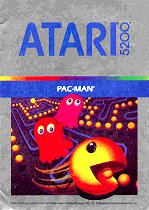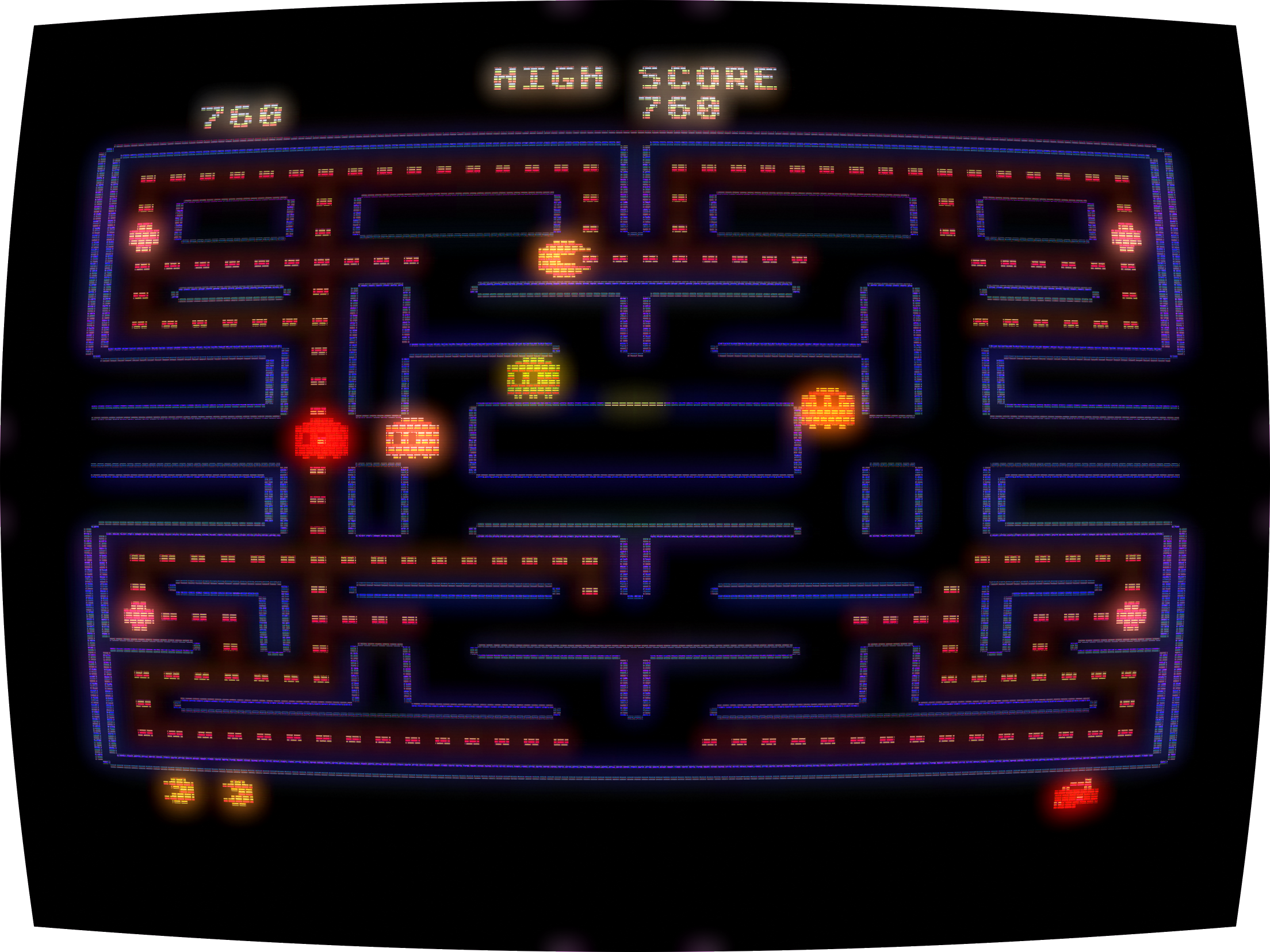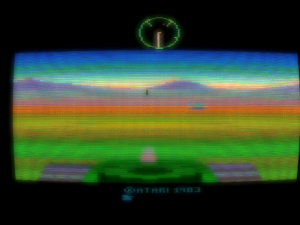 The Game: As a round yellow creature consisting of a mouth and nothing else, you maneuver around a relatively simple maze, gobbling small dots and evading four colorful monsters who can eat you on contact. In four corners of the screen, large flashing dots enable you to turn the tables and eat the monsters for a brief period for an escalating score . Periodically, assorted items appear near the center of the maze, and you can consume these for additional points as well. The monsters, once eaten, return to their home base in ghost form and return to chase you anew. If cleared of dots, the maze refills and the game starts again, but just a little bit faster… (Atari, 1982)
The Game: As a round yellow creature consisting of a mouth and nothing else, you maneuver around a relatively simple maze, gobbling small dots and evading four colorful monsters who can eat you on contact. In four corners of the screen, large flashing dots enable you to turn the tables and eat the monsters for a brief period for an escalating score . Periodically, assorted items appear near the center of the maze, and you can consume these for additional points as well. The monsters, once eaten, return to their home base in ghost form and return to chase you anew. If cleared of dots, the maze refills and the game starts again, but just a little bit faster… (Atari, 1982)
Memories: In the war of the second-generation consoles, it was clear what the chief ammunition would be: immensely popular arcade game licenses. The ColecoVision jumped out of the gates with Donkey Kong as a pack-in title, and Atari – already fighting bad word-of-mouth criticism of the 5200’s lackluster joysticks – would have to give the SuperSystem something a little more compelling than its cousin 2600’s Combat pack-in. But then, of course, everyone already knew that Atari held that most precious of arcade licenses in the early 80s, Pac-Man.
 Sadly, that wasn’t the pack-in. Super Breakout was. What were they thinking?
Sadly, that wasn’t the pack-in. Super Breakout was. What were they thinking?
But perhaps what they weren’t expecting was that the 5200 version of the game would be almost identical to the version of Pac-Man already in circulation for the Atari 400 and 800 computers. And in reality, it really was the same – the 5200 shared a lot of its basic architecture with the Atari computers at the time, so porting games over to the new system  was fairly easy.
was fairly easy.
The result was a much better (though not perfect) translation of Pac-Man than players had seen from Atari; certainly light-years ahead of the mess Atari had made of the game for the 2600. The sound was much closer, and the look of the game was a vast improvement. The maze retained its arcade inspiration’s basic layout, though it was redistributed slightly to fit a horizontal, rather than vertical, screen. The ghosts’ eyeball-less eyes, making them look a bit like Little Orphan Annie ghosts, shifted position to give you some inkling of where they were headed. And last but not least, the intermissions were included as well.
 The ubiquitous 5200 controller issues aside, Pac-Man did Atari proud, though it may have come too late in the day to rebuild the respect the company had lost by shipping the VCS version after mere weeks of development and programming.
The ubiquitous 5200 controller issues aside, Pac-Man did Atari proud, though it may have come too late in the day to rebuild the respect the company had lost by shipping the VCS version after mere weeks of development and programming.


